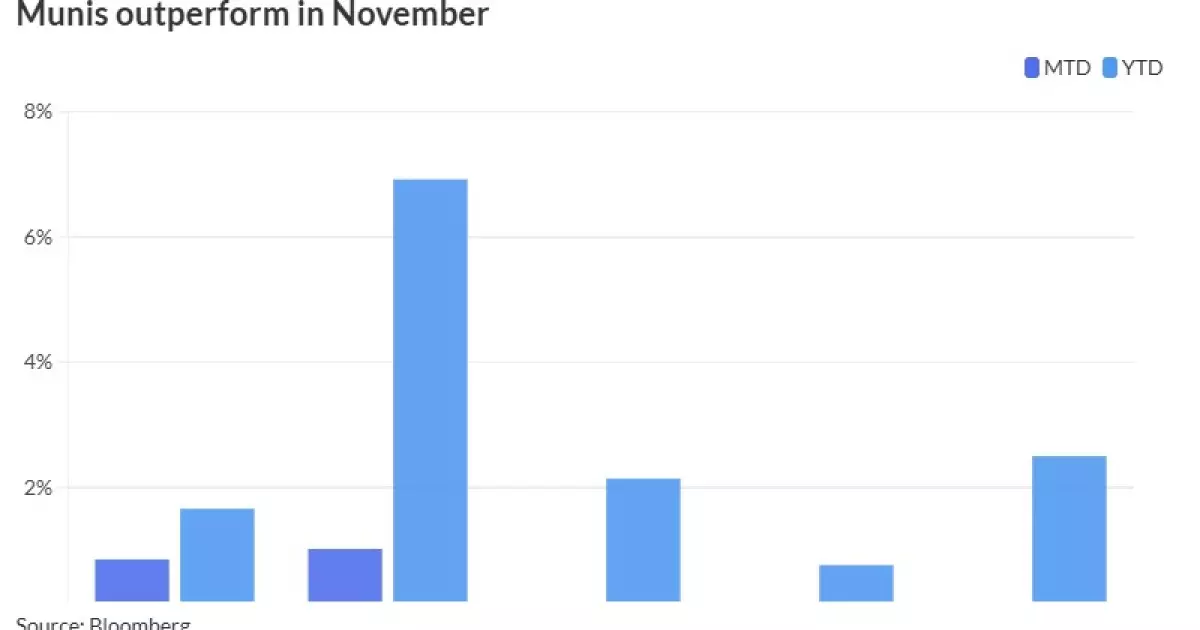The municipal bond market has seen notable stability and performance in November, particularly as the Thanksgiving holiday approaches. With a subdued trading environment leading into the holiday-shortened week, the performance indicators provide a clear insight into current market conditions and investor sentiments. This article delves into the dynamics and technical aspects of the municipal bond market, highlights the contrasting responses in different segments, and anticipates future movements in light of macroeconomic developments.
Stable Yield Performance and Diminished Trading Activity
November has proven to be an unusually stable month for municipal bonds, with triple-A yields hardly shifting for nine consecutive trading sessions. This steadiness comes in stark contrast to minor fluctuations in U.S. Treasuries, which experienced slight losses on short maturities while remaining relatively stable in longer durations. As noted by analysts, strong market technicals have been the backdrop for this performance, allowing municipalities to outshine Treasuries and corporates.
The lack of pronounced trading activity indicates growing caution among investors, as many are grappling with the volatility of interest rates and potential tax implications that could adversely affect the attractiveness of tax-exempt bonds. Mikhail Foux from Barclays emphasized that, despite low levels of supply that would typically prompt heightened trading, the market seems less inclined to chase performance under these unattractive ratios. The two-year municipal to UST ratio, sitting at around 60%, indicates a relative pricing that may not entice investors as it has in prior months.
Looking forward, the upcoming new-issue calendar suggests investors will encounter approximately $1.4 billion in new offerings during the Thanksgiving week. This relatively modest supply is part of a broader narrative where net negative supply in December is projected to diminish significantly from $17 billion in November to $3 billion. The decrease in supply, paired with respectable municipal performance—returning 0.85% for November thus far—could indicate a favorable technical backdrop that might bolster municipal outperformance moving into December.
Historical trends demonstrate that December often brings robust performance for high-grade municipalities, maintaining an impressive average monthly return of 0.9% over the last decade. However, as Foux alerts, while the outlook is generally positive, caution is warranted for 2025, especially since unfavorable trading conditions could undermine future returns.
Performance data for high-yield municipal bonds reveals a more volatile landscape compared to their high-grade counterparts. November returns for high-yield issues stand at +1.02%, leading to a year-to-date yield of 6.92%. The variances in performance can largely be attributed to divergent investor appetites and the relative security associated with high-grade bonds compared to the risks embedded in high-yield debt.
This month, taxable municipals have suffered slight losses, moving to year-to-date returns of 2.14%. Although typically less sensitive to macroeconomic changes, the taxable municipal market reflects broader trends that could influence overall investor sentiment.
Eyeing Macroeconomic Indicators and Federal Actions
With macroeconomic data becoming increasingly relevant, particularly the core PCE index due for release, market participants are cautiously observing potential cues for Federal Open Market Committee (FOMC) decisions. As forecasts suggest 2.8% GDP growth for Q3 2024, the likelihood of substantial changes in monetary policy seems restrained without clear signs of economic distress.
Despite potential for continued strength in the municipal market as we approach year-end, the mood among analysts remains guarded. Some investors may still hesitate to dive fully into tax-exempt bonds as valuations are perceived to be stretched. Nonetheless, for investors with a penchant for long-held municipal bonds, interest rates continue to appear historically attractive, provided the rates market provides the expected stability.
As the municipal bond market prepares to close out the year, participants face a delicate balance of opportunity against the backdrop of a fluctuating economic landscape and varying investor confidence levels. While many elements align to favor municipal bonds, the market’s behavior in December and beyond will hinge considerably on macroeconomic indicators, Federal Reserve policies, and the evolving landscape of supply and demand dynamics.
In navigating this complex environment, investors should remain vigilant and adaptable, keeping a close eye on both historical precedents and future indicators that will undoubtedly influence municipal performance in the months to come. As such, careful analysis and prudent decision-making will be paramount for those looking to capitalize on the nuances of the municipal bond market.


Leave a Reply